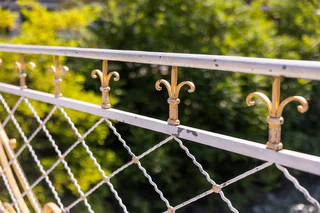
Chiesa di Santa Maria Assunta Church
Merano/Meran, Meran/Merano, Meran/Merano and environs
| Explorez les merveilles touristiques de Merano. Des monuments historiques aux musées captivants, il y a tant à découvrir. |

Merano/Meran, Meran/Merano, Meran/Merano and environs

1/3
Meran/Merano, Meran/Merano and environs

1/3
Merano/Meran, Meran/Merano, Meran/Merano and environs

1/3
Merano/Meran, Meran/Merano, Meran/Merano and environs

Merano/Meran, Meran/Merano, Meran/Merano and environs

1/3
Merano/Meran, Meran/Merano, Meran/Merano and environs

Plars di Mezzo/Mitterplars, Algund/Lagundo, Meran/Merano and environs

1/5
Merano/Meran, Meran/Merano, Meran/Merano and environs

1/3
Merano/Meran, Meran/Merano, Meran/Merano and environs

1/3
Merano/Meran, Meran/Merano, Meran/Merano and environs

Merano/Meran, Meran/Merano, Meran/Merano and environs

Merano/Meran, Meran/Merano, Meran/Merano and environs

1/7
Merano/Meran, Meran/Merano, Meran/Merano and environs

1/3
Merano/Meran, Meran/Merano, Meran/Merano and environs

Merano/Meran, Meran/Merano, Meran/Merano and environs

1/11
Merano/Meran, Meran/Merano, Meran/Merano and environs

Merano/Meran, Meran/Merano, Meran/Merano and environs

1/3
Merano/Meran, Meran/Merano, Meran/Merano and environs

Merano/Meran, Meran/Merano, Meran/Merano and environs

Merano/Meran, Meran/Merano, Meran/Merano and environs

Merano/Meran, Meran/Merano, Meran/Merano and environs

1/3
Merano/Meran, Meran/Merano, Meran/Merano and environs

Merano/Meran, Meran/Merano, Meran/Merano and environs

Merano/Meran, Meran/Merano, Meran/Merano and environs

1/2
Merano/Meran, Meran/Merano, Meran/Merano and environs

1/3
Merano/Meran, Meran/Merano, Meran/Merano and environs

1/3
Merano/Meran, Meran/Merano, Meran/Merano and environs

1/5
Merano/Meran, Meran/Merano, Meran/Merano and environs

1/3
Meran/Merano, Meran/Merano and environs

1/3
Merano/Meran, Meran/Merano, Meran/Merano and environs